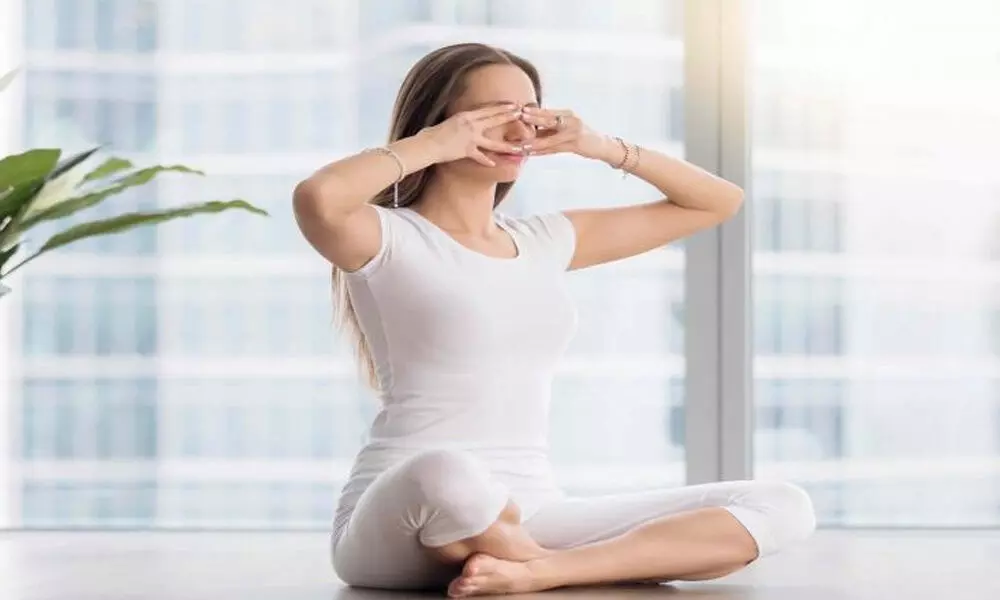5 breathing exercises to strengthen your respiratory system

Breathe deep, crawl and walk for Covid recovery
Coronavirus Breathing Exercises: Breathing exercises are a great way to develop the lungs as they improve lung muscles, clear out any secretion and increase the capacity by supplying an adequate amount of oxygen.
Coronavirus Breathing Exercises: While Covid-19 cases continue to surge, we need to be even more vigilant, while staying at home and keeping ourselves healthy and fit. While eating right and exercising ensures our bodies and minds stay fit, it is also important to strengthen our respiratory system -- as that is also severely affected by the virus.
Breathing exercises are a great way to develop the lungs as they improve lung muscles, clear out any secretion and increase the capacity by supplying an adequate amount of oxygen. There are several other benefits to these exercises as well! It also helps us stay calmer, and de-stress especially in these unprecedented times we are living in.
To get started, here are five breathing exercises you can do at any time of the day and in any comfortable space.
Deep breathing with increasing counts: breath-in and breath-out
This is one of the easiest and most important exercises. It helps in strengthening our lungs and improving blood flow, immunity and eliminating stress and anxiety.
Steps:
* Sit down in a relaxed position, take a deep breath and count your inhalation and exhalation. Ideally, your inhalation and exhalation counts should be the same.
* With each breath increase the count to inhale and exhale for as long as comfortable. Practise from 2 to 5 minutes duration.
Diaphragmatic breathing
Also known as belly breathing, or abdominal breathing, this particular exercise has various benefits such as managing irritable bowel syndrome, depression, anxiety and insomnia. Normally people get in the habit of breathing without fully utilising the lower part of their lungs. With this breathing technique, you consciously practise filling in lungs to their maximum capacity and increasing oxygen uptake.
Steps:
* Lie flat on the floor or sit in a comfortable position and relax your shoulders
* Put one hand below your chest and just above your stomach (this is where your diaphragm sits)
* Take a deep breath in by expanding your diaphragm or stomach and exhale slowly.
Cardiovascular exercise
The benefit of any cardiovascular exercises is that it increases your heart rate which forces the respiratory system to become more efficient and eventually increases the amount of oxygen you take with each breath. This allows for your lungs to improve capacity and function better. Here are some of the most common cardiovascular exercises that you can do from the comfort of your home: are brisk walking, spot jogging, jumping rope, jumping jacks and climbing staircase.
Anulom-vilom
More commonly known as alternate nostril breathing, it is a prevalent Pranayama and has been spoken about in the Hatha Yoga literature. This exercise helps clear out the nasal passage and improves respiratory muscle strength. It is advised that Anulom-vilom should be practiced on an empty stomach ideally in the morning or in the evening after a long meal gap.
Steps:
* Sit on a chair or on the ground cross legged, in a meditation position
* With your right thumb, close your right nostril and inhale through the left nostril. Release your right nostril and with your middle and ring finger, close your left nostril exhaling through the right nostril
* Inhale through the right nostril, then release the fingers, closing the right nostril and exhaling through the left nostril
* Continue the slow breathing through alternate nostrils and focus on the breath
* Practise this for 10 minutes for benefits to start accruing
Bhramari
Derived from Sanskrit, brahmari literally means a bee. It is a humming exercise, which increases nitric oxide in the body and acts as vasodilators; helps with easier blood flow through the vessels and prevents muscles from tightening.
Steps:
* Sit on a chair or on the ground cross legged, in a meditation position
* Close your ears using your thumb and place your middle and ring fingers lightly at the inner corner of your eyes.
Rest your index finger above your eyebrows and little finger where it rests on your cheeks
* Take a deep breathe in and while exhaling make a soft humming sound similar to 'hmmmmm', throughout the entire exhalation. Inhale again and while exhaling make the humming sound
* Practise for 10 minutes for benefits to start accruing.
These exercises won't help prevent Covid, however, if performed daily, they will help in developing a stronger respiratory system which can help our body to fight any possible infection. Having said that, if you or your family members have any pre-existing health conditions or are feeling any discomfort, please do consult with your doctor.















